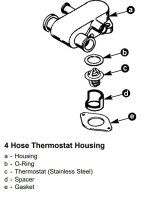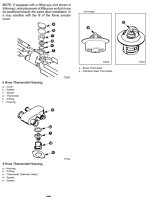Ok put it all back together and there is a problem I cannot engage reverse. Everything was set up by the book. So I removed the shift cable
and had it marked with a sharpie on neutral and forward, and somebody was shifting at idle and I filmed underneath to show what it does. Again this is just shift cable loose and manually shifted. It does the same with everything attached.
https://www.dropbox.com/sh/s7em1u8hb08wlsc/AACllRM_JYoNR24Zr72s4lIUa?dl=0
[FONT="]I wonder if the shift shaft got bent on removal and reinstall enough to cause it to not go all the way to the wall of the drive? Just read about that.[/FONT]
The water circulation problem has been resolved by changing the 2 water pumps. So the reverse is the new and pressing problem.
and had it marked with a sharpie on neutral and forward, and somebody was shifting at idle and I filmed underneath to show what it does. Again this is just shift cable loose and manually shifted. It does the same with everything attached.
https://www.dropbox.com/sh/s7em1u8hb08wlsc/AACllRM_JYoNR24Zr72s4lIUa?dl=0
[FONT="]I wonder if the shift shaft got bent on removal and reinstall enough to cause it to not go all the way to the wall of the drive? Just read about that.[/FONT]
The water circulation problem has been resolved by changing the 2 water pumps. So the reverse is the new and pressing problem.
Last edited:



